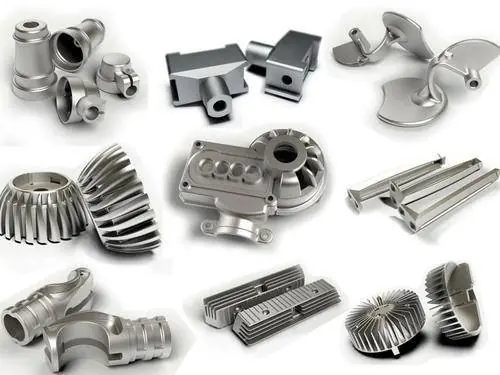Die Casting is an industrialized process used in the creation of complex geometry metal fragments by forcing or pouring melted metal into recyclable steel patterns, called dies. These steel molds, also identified as dies or tools are manufactured specifically for each project. They serve as the master copy from which some other copies of a production part are manufactured.
Dies permit for producing high-quality metal equipment with high accuracy and confirm that the process is highly repeatable. The die casting process is carried out with the use of a furnace, the die casting equipment, the metal material, and the die itself. Magnesium, Aluminum, and zinc are the most common die casting alloys.
Rapid die casting through particular tooling is an approach to die-cast prototyping that has been used by foundries for several years, but the advent of Stereo-lithography and Computer-Aided Design modeling are driving an interest in the latest past into the application such software delivers. For example, utilizing a Stereolithography model, an H-13 steel kick the bucket can be cast to a net-shape inside a small amount of time rather than what is important to cut device steel.
Additional geometrical shapes can be added using secondary machining. A bit of advantage of this procedure is that it can give a pass on cast parts in short-runs, as parts are prepared as throwing with perfect warmth move and physical properties indistinguishable from that of end segments. Rapid die casting process can deliver cost-efficiencies as well, as disparate to plaster mold casting, especially if the quantities required exceed 1000. By way of the parts are run inside a die-cast press, a big number of components can be produced within a little time span and that adds to significant economies of scale.
This largely accurate method to provide short runs is capable of producing a casting with excellent surfaces and fine details. The bite the dust casters can oblige separating line, with side pass on pulls for manual stacking of a material utilized in the way to deal with fast prototyping. Once more, that side pulls approach isn’t fitting for use with dainty, tall-standing segment subtleties or cast-in waterlines. Usually, lead times of rapid casting process ranges from 5 to 8 weeks, which also depends on the complexity and size of the essential end part.
The additions are acclimated and afterward fitted into a shaped base, where the launch pins are moreover put. The floods and doors are machined in and cast pass on are set to be run inside a standard bite the dust cast press. The segments can be run in practically beyond words amalgam, in spite of the fact that the surface completing requires a trim and optional machining varying.
Die Casting Applications:
Die casting is most suitable for casting medium-sized parts with some details. Die-casting is the largest casting technique that is used to manufacture consumer, industrial and commercial products like parts of the sink faucet, connector housing, automobiles, toys, gears, etc. From non-ferrous metals like magnesium, aluminum, etc. most die castings are done
Depending on specific factors, one type of die casting method may be advantageous over another. By SKS Die Casting we can execute several types of die casting, ensuring that your part is appropriate for the environment in which it will perform. We can perform the following types of die casting:
Cold Chamber Die Casting
Inside this die casting process, melted metal is poured into the cylindrical cover or cold chamber. A hydraulically activated nozzle seals the cold chamber port and pushes the metal into the die cavity at high force. Cold chamber die-casting equipment is used for Zinc or Aluminum alloys with large melting points.
Hot Chamber Die Casting
The injection system of a hot chamber machine is drenched in a liquid metal shower of a metal holding heater. The gooseneck is defined as the furnace which is attached to the machine by a metal feeding system. As the injection cylinder needle rises, a port in the injection cylinder opens permitting the molten metal to fill the cylinder. As the needle moves down, it covers the port and forces metal to fill the hole through the nozzle and gooseneck to the die cavity. In this type die-casting machines are primarily used for copper, lead, zinc, and other low melting point alloys.
Advantages of Die-Casting
• Cast-able metals include zinc, magnesium, and aluminum.
• Mold tools can create tens of thousands of parts economically.
• Accuracy and Surface finish are excellent
• Complex geometries can be accomplished
• Especially appropriate for larger metal parts










